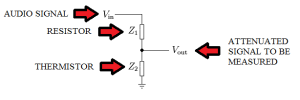Inspired by Scott Locklin’s series of posts criticizing awful Kickstarter projects, I would like to share my thoughts on the Thermodo.
I first noticed this project when I followed a link from Hacker News to this article praising a successful fundraising drive by a company called Robocat. We learn that “They hit their campaign goal in just a few hours, and have raised around $270K so far,” and that they “did our best to estimate the cost of production before we started.”
Robocat is no slouch in the marketing department:
We brought with us a lot of experience from marketing our own apps and worked diligently on presenting the story in clear and concise way. We have a lot of the resources in house and produced everything ourselves, from the graphics to the video.
They also needed to be cautious when choosing their fundraising goals:
We meticulously calculated the various cost factors in developing, producing and bringing Thermodo into the world. There are so many factors in the supply chain that all need to be accounted for.
How did they do?
Luckily backers blew right through that initial goal, and we now have more options.
Whew.
So what is this project about?
In 2011 Robocat, a group of Danish iPhone application developers, released an iPhone “thermometer app” that displays the current temperature of the nearest compatible weather station to the phone’s user. Some users didn’t realize that this thermometer application was not an actual thermometer and couldn’t actually measure temperature, and these users rightly complained. Apparently, the iPhone doesn’t include a temperature sensor.
Not shrinking from a challenge, Robocat decided to jump into the hardware sector and to develop a thermometer for the iPhone, and to raise funds for its development on Kickstarter.
Behold, a thermometer for your iPhone:

Computers these days–it almost looks like a real object.
Wow!
How does it work?
Thermodo consists of a passive temperature sensor built into a standard 4 pole audio jack enclosed by a sturdy housing. This allows your mobile device to read Thermodo’s temperature straight from the audio input. Thermodo sends an audio signal through the temperature sensor. This sensor will then attenuate the signal amplitude depending on the actual temperature. This attenuation can now be detected on the microphone input and through software we calculate the corresponding temperature.
Really? You know what that sounds like? A voltage divider with a thermistor:
Observe that this diagram contains 2 components: a resistor and a thermistor. This circuit does what Robocat claims the Thermodo does. Well, you need a headphone jack too, and you need to solder it.
Easy peasy! We call this the Thermodo Principle™
An easy peasy two hundred seventy thousand dollars!
Well, the product’s backers are getting an actual item that they don’t have to solder. Will it work? I am pretty sure the thing will be able to measure temperature. It would be pretty tough to screw that up. But my first thought when reading about it was the thermometer’s settling time. How quickly will it settle to the correct temperature? Robocat plans to encase the sensor in aluminum in order to improve the response time.
There’s no difference in accuracy. Both uses the same temperature sensor. Aluminum will be more sturdy and responsive to temperature changes.
So the question reduces to how quickly a block of aluminum can change temperature in air. I don’t know how many Kickstarter backers have made it through a college heat transfer course (my guess for this project is 0), but I have taken such a course. Here’s a simple differential equation describing the heating rate of a solid material, assuming the entire block has a uniform internal temperature:
This means that the thermometer settles like a first order system, entirely dependent on the time constant .
We can estimate these terms from the Thermodo promotional materials. It appears to be an aluminum cylinder with a diameter equal to that of an iPhone, 7.6mm and height about 1.5 times that amount. Let’s be generous and say it’s 10mm tall and 7.5 mm across. That gives it an exposed surface area of and a mass of
. The specific heat of aluminum is
. The coefficient of convective heat transfer of aluminum depends on the type of convection and the surface features of the metal. It ranges from
to
. That gives us a time constant ranging from 19 seconds in forced convection to 771 seconds in quiescent air, which means that the sensor gets 63% more accurate every 19 to 771 seconds!
So what happens when you take your Thermodo from your pocket (approx. 90°F and put it in the air on a brisk morning, approx. 50°F)?
Controls engineers conventionally define the settling time of a 1st-order system to be 4 time constants (this gets your error down to 2% of the initial error). So for our most optimistic scenario, you only need to hold your iPhone out in the air for a minute to get an accurate reading, as long as you can handle the gale-force winds. It will also settle quickly if you blow on it, or shake it around. Are you still wondering why Apple didn’t include a temperature sensor on the iPhone?
My diagnosis: a bunch of software geeks attempted to create a hardware project without knowing anything about heat transfer or the theory behind sensors and got in over their heads. I bet they haven’t even tested a prototype yet. But at least they got hundreds of thousands of dollars from people who just wanted a thermometer to tell them how the air feels where they are.
Nevertheless, this is a Kickstarter success.
Edit: Who am I, you ask? I’m not much of a blogger, but I saw this silly kickstarter project and couldn’t find any criticism of it on the internet. What are my credentials? It doesn’t matter. The analysis should stand on its own.


